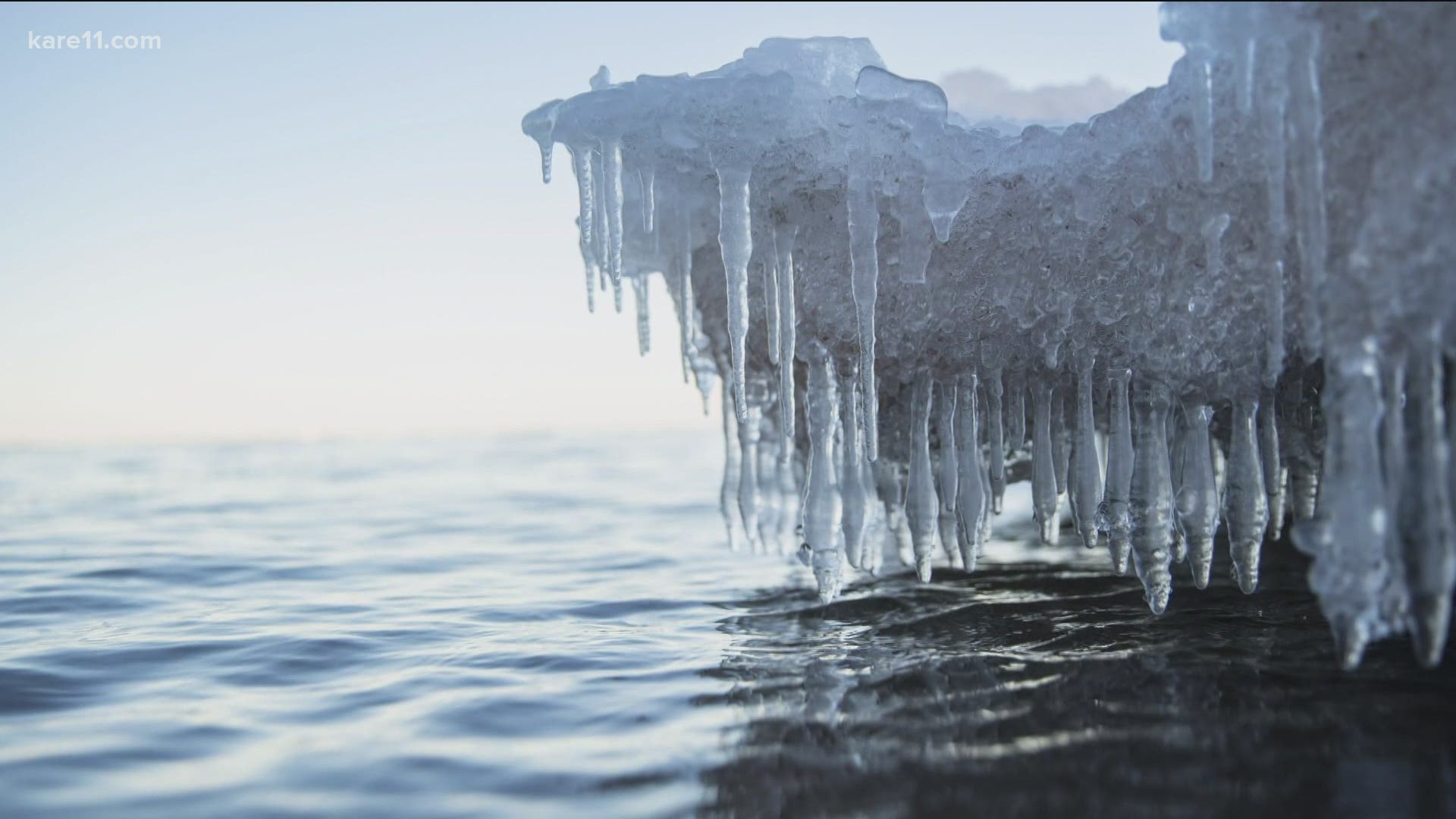DULUTH, Minn. — The windchill over Lake Superior Wednesday hit almost 30 below. In our lifetimes, that is what the majestic lake is used to in January.
But because the temperatures right now haven't been on average this month, and we had mild temperatures late in 2020, the majestic lake is showing us the consequence.
“Lake Superior is again behind average for getting ice cover so far this year. We haven't even cracked 6% of the lake on average getting any ice cover,” said Brooks Johnson, a reporter for the Star Tribune that covers the Duluth area.
Ice cover is lacking on the lake, and the reason to talk about it now is because it happened last year, too.
“That is concerning to scientists in the long term because it's the second year in a row we are projected well-below average ice coverage. Over the last 50 years, Lake Superior will see about 50% of the lake covered at its maximum extent. This year, they expect about 30% of the lake will be covered,” Johnson said.
So what does less Ice cover mean?
One, it's not good for erosion of the shoreline. Fresh water lapping up to it continues that cycle.
Second is life in the water.
“Organisms depend on ice cover to reproduce and to grow safely in winter. Things that depend on sunlight and feed larger organisms. which over time, will lead to impact on fish populations … and then, in (the) long run, that could impact fisheries,” Johnson said.
And three.
“It could lead to toxic algae blooms. We just saw our first large one near the Apostle Islands a few years ago and the fear is that these blooms, that are more common on lower and more shallow lakes, the fear is these could spread and that could impact fish habitat and recreation on the lake,” Johnson said.
All of which are not good, but only if this keeps happening.
Two winters of this is not a huge alarm but it is something to put on watch.
“Scientists I talk to for the story said two years, back-to-back low ice coverage isn't particularly concerning as we have seen that before in recent decades, but if next year is another repeat of this low ice, that's where things implement this positive feedback loop where we see warmer water leading to less ice coverage,” Johnson said.

